Rosenmund Lab
In the Rosenmund Lab, we study the process of communication between neurons at their point of contact—the synapse. At the synapse, an incoming electrical response triggers the release of a chemical signal, the neurotransmitter, in a process called exocytosis. The neurotransmitter molecules activate an electrical response in the receiving cell and, thus, the signal is propagated. While many of the essential protein players in transmission at a chemical synapse have been defined, many open questions about the details of this process remain.
Our overarching goal in the Rosenmund Lab is to understand how different proteins, structures or genes determine neurotransmitter release properties. Why does synaptic transmission differ between cell types? How do proteins work together to assure the speed and efficiency of synaptic exocytosis? We use diverse approaches to reveal the molecular mechanisms underlying synaptic processes
Research Focus
Employment opportunities
Prof. Dr. Christian Rosenmund
christian.rosenmund(at)charite.de
+49 30 450 639 090
Lab rotations
Marion Weber-Boyvat, PhD
marion.weber-boyvat(at)charite.de
+49 30 450 639 157

Team

Prof. Christian Rosenmund
Principal Investigator
Curriculum Vitae
CC02 für Grundlagenmedizin
Neurowiss. für zelluläre molek. Neurobiologie
-AG Rosenmund-
Charité Universitaetsmedizin Berlin
Charitéplatz 1
10117 Berlin
Germany
Tel. +49-(0)30-450-639 061
christian.rosenmund(at)charite.de

Heidi Pretorius
Coordinator/Office - AG Rosenmund
CC02 für Grundlagenmedizin
Neurowiss. für zelluläre molek. Neurobiologie
-AG Rosenmund-
Charité Universitaetsmedizin Berlin
Charitéplatz 1
10117 Berlin
Germany
Tel. +49-(0)30-450-539 145
heidi.pretorius(at)charite.de

Melissa Herman, PhD
Group leader
CC02 für Grundlagenmedizin
Neurowiss. für zelluläre molek. Neurobiologie
-AG Rosenmund-
Charité Universitaetsmedizin Berlin
Charitéplatz 1
10117 Berlin
Germany
Tel. +49-(0)30-450-639 174
melissa.herman(at)charite.de

Dr. Thorsten Trimbuch
Post-Doc
Head of VCF
CC02 für Grundlagenmedizin
Neurowiss. für zelluläre molek. Neurobiologie
-AG Rosenmund-
Charité Universitaetsmedizin Berlin
Charitéplatz 1
10117 Berlin
Germany
Tel. +49-(0)30-450-639 085
thorsten.trimbuch(at)charite.de
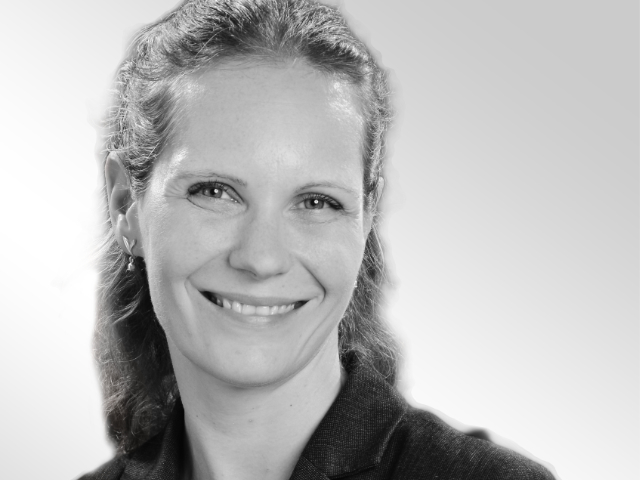
Marion Weber-Boyvat, PhD
Post-Doc
CC02 für Grundlagenmedizin
Neurowiss. für zelluläre molek. Neurobiologie
-AG Rosenmund-
Charité Universitaetsmedizin Berlin
Charitéplatz 1
10117 Berlin
Germany
Tel. +49-(0)30-450-639 157
Marion.Weber-Boyvat(at)charite.de
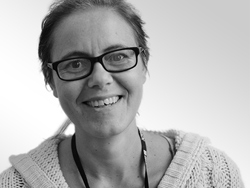
Estelle Toulmé, PhD
Post-Doc
CC02 für Grundlagenmedizin
Neurowiss. für zelluläre molek. Neurobiologie
-AG Rosenmund-
Charité Universitaetsmedizin Berlin
Charitéplatz 1
10117 Berlin
Germany
Tel. +49-(0)30-450-639 174
Estelle.Toulme(at)charite.de

Anisha Dayaram, PhD
Post-Doc
CC02 für Grundlagenmedizin
Neurowiss. für zelluläre molek. Neurobiologie
-AG Rosenmund-
Charité Universitaetsmedizin Berlin
Charitéplatz 1
10117 Berlin
Germany
Tel. +49-(0)30-450-560 169
Anisha.Dayaram(at)charite.de
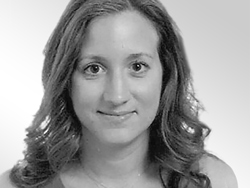
Beatriz Rebollo González, PhD
Post-Doc
CC02 für Grundlagenmedizin
Neurowiss. für zelluläre molek. Neurobiologie
-AG Rosenmund-
Charité Universitaetsmedizin Berlin
Charitéplatz 1
10117 Berlin
Germany
Tel. +49-(0)30-450-639 090
beatriz.rebollo-gonzalez(at)charite.de

Sina Zobel, MSc.
PhD Student
CC02 für Grundlagenmedizin
Neurowiss. für zelluläre molek. Neurobiologie
-AG Rosenmund-
Charité Universitaetsmedizin Berlin
Charitéplatz 1
10117 Berlin
Germany
Tel. +49-(0)30-450-639 156
sina.zobel(at)charite.de

Yi Lien, MSc.
PhD Student
CC02 für Grundlagenmedizin
Neurowiss. für zelluläre molek. Neurobiologie
-AG Rosenmund-
Charité Universitaetsmedizin Berlin
Charitéplatz 1
10117 Berlin
Germany
Tel. +49-(0)30-450-639 156
yi.lien(at)charite.de
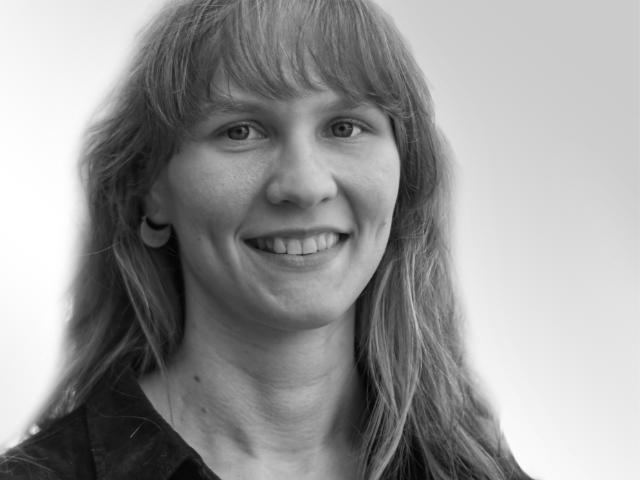
Judit Ozsvar, MSc.
PhD Student
CC02 für Grundlagenmedizin
Neurowiss. für zelluläre molek. Neurobiologie
-AG Rosenmund-
Charité Universitaetsmedizin Berlin
Charitéplatz 1
10117 Berlin
Germany
Tel. +49-(0)30-450-639 156
judit.ozsvar(at)charite.de
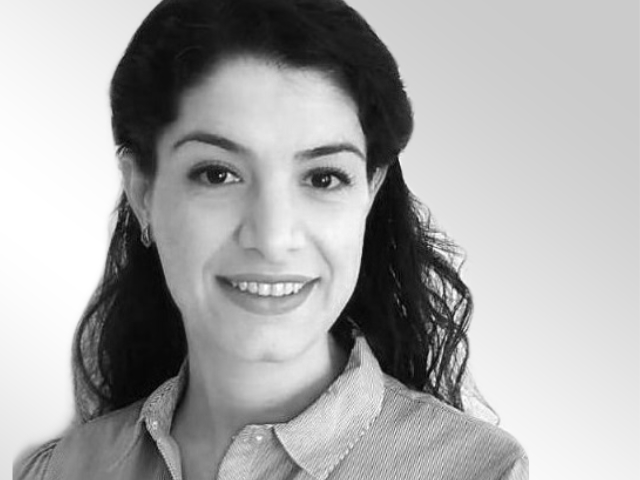
Maryam Mohamaddokht, MSc.
PhD Student
CC02 für Grundlagenmedizin
Neurowiss. für zelluläre molek. Neurobiologie
-AG Rosenmund-
Charité Universitaetsmedizin Berlin
Charitéplatz 1
10117 Berlin
Germany
Tel. +49-(0)30-450-639 156
maryam.mohamaddokht(at)charite.de

Seulkee Yang, MSc.
PhD Student
CC02 für Grundlagenmedizin
Neurowiss. für zelluläre molek. Neurobiologie
-AG Rosenmund-
Charité Universitaetsmedizin Berlin
Charitéplatz 1
10117 Berlin
Germany
Tel. +49-(0)30-450-639 156
seulkee.yang(at)charite.de

Małgorzata Lubas, MSc.
PhD Student
CC02 für Grundlagenmedizin
Neurowiss. für zelluläre molek. Neurobiologie
-AG Rosenmund-
Charité Universitaetsmedizin Berlin
Charitéplatz 1
10117 Berlin
Germany
Tel. +49-(0)30-450-639 156
malgorzata.lubas(at)charite.de

Astghik Abrahamyan, MSc.
PhD Student, Herman group
CC02 für Grundlagenmedizin
Neurowiss. für zelluläre molek. Neurobiologie
-AG Rosenmund-
Charité Universitaetsmedizin Berlin
Charitéplatz 1
10117 Berlin
Germany
Tel. +49-(0)30-450-639 174
astghik.abrahamyan(at)charite.de

Gözdem Karapınar Kapucu, MSc.
PhD Student, Weber-Boyvat group
CC02 für Grundlagenmedizin
Neurowiss. für zelluläre molek. Neurobiologie
-AG Rosenmund-
Charité Universitaetsmedizin Berlin
Charitéplatz 1
10117 Berlin
Germany
Tel. +49-(0)30-450-639 174
goezdem.karapinar(at)charite.de

Bettina Brokowski, TA
TA
CC02 für Grundlagenmedizin
Neurowiss. für zelluläre molek. Neurobiologie
-AG Rosenmund-
Charité Universitaetsmedizin Berlin
Charitéplatz 1
10117 Berlin
Germany
Tel. +49-(0)30-450-639 113
Bettina.Brokowski(at)charite.de
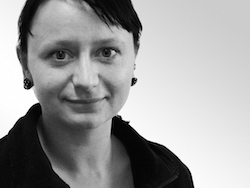
Katja Pötschke, TA
TA
CC02 für Grundlagenmedizin
Neurowiss. für zelluläre molek. Neurobiologie
-AG Rosenmund-
Charité Universitaetsmedizin Berlin
Charitéplatz 1
10117 Berlin
Germany
Tel. +49-(0)30-450-639 073
Katja.Poetschke(at)charite.de

Berit Söhl-Kielczynski, TA
TA
CC02 für Grundlagenmedizin
Neurowiss. für zelluläre molek. Neurobiologie
-AG Rosenmund-
Charité Universitaetsmedizin Berlin
Charitéplatz 1
10117 Berlin
Germany
Tel. +49-(0)30-450-639 156
Berit.Soehl-Kielczynski(at)charite.de
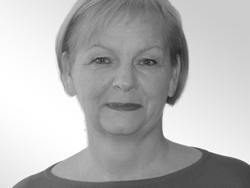
Heike Lerch, TA
TA
CC02 für Grundlagenmedizin
Neurowiss. für zelluläre molek. Neurobiologie
-AG Rosenmund-
Charité Universitaetsmedizin Berlin
Charitéplatz 1
10117 Berlin
Germany
Tel. +49-(0)30-450-639 073
Heike.Lerch(at)charite.de
Research
Methods
Protein structure-function
Transcriptional programs
Functional anatomy
Human neuroscience
Ultimately, a major goal in neuroscience research is to understand the human brain, in health and disease. While model systems play an invaluable role in this endeavor, new research has revealed that human neurons have physiological properties that diverge from those of model systems. Differences in function between human neurons and other model organisms is particularly important in modeling disease mechanisms. In the Rosenmund Lab, we investigate aspects of human neurophysiology using human induced pluripotent stem cell (hIPSC) and patient tissue.
Publications
*co-corresponding author
GABAergic synaptic components are largely preserved across human and mouse neuronal models.
Neurotransmitter release is triggered by a calcium-induced rearrangement in the Synaptotagmin-1/SNARE complex primary interface.
The stability of the primed pool of synaptic vesicles and the clamping of spontaneous neurotransmitter release rely on the integrity of the C-terminal half of the SNARE domain of syntaxin-1A.
The lipid transporter ORP2 regulates synaptic neurotransmitter release via two distinct mechanisms.
Weber-Boyvat M*, Kroll J, Trimbuch T, Olkkonen VM, Rosenmund C*.
Cell Rep. 2022 Dec 27;41(13):111882. doi: 10.1016/j.celrep.2022.111882.
Dynamin is primed at endocytic sites for ultrafast endocytosis.
Imoto Y*, Raychaudhuri S, Ma Y, Fenske P, Sandoval E, Itoh K, Blumrich EM, Matsubayashi HT, Mamer L, Zarebidaki F, Söhl-Kielczynski B, Trimbuch T, Nayak S, Iwasa JH, Liu J, Wu B, Ha T, Inoue T, Jorgensen EM, Cousin MA, Rosenmund C*, Watanabe S*
Neuron. 2022 Jul 1:S0896-6273(22)00548-7. doi: 10.1016/j.neuron.2022.06.010.
Syntaxin-1A modulates vesicle fusion in mammalian neurons via juxtamembrane domain dependent palmitoylation of its transmembrane domain.
Vardar G, Salazar-Lázaro A, Zobel S, Trimbuch T, Rosenmund C.
J Elife. 2022 May 31;11:e78182. doi: 10.7554/eLife.78182.
Deconstructing Synaptotagmin-1's Distinct Roles in Synaptic Vesicle Priming and Neurotransmitter Release.
Bouazza-Arostegui B, Camacho M, Brockmann MM, Zobel S, Rosenmund C.
J Neurosci. 2022 Apr 6;42(14):2856-2871. doi: 10.1523/JNEUROSCI.1945-21.2022. Epub 2022 Feb 22.
Control of neurotransmitter release by two distinctmembrane-binding faces of the Munc13-1 C1C2B region.
Camacho M, Quade B, Trimbuch T, Xu J, Sari L, Rizo J, Rosenmund C.
Elife. 2021 Nov 15;10:e72030. doi: 10.7554/eLife.72030.
Reexamination of N-terminal domains of Syntaxin-1 in vesicle fusion from central murine synapses.
Vardar G, Salazar-Lázaro A, Brockmann MM, Weber-Boyvat M, Zobel S, Kumbol VW, Trimbuch T, Rosenmund C.
Elife. 2021 Aug 24;10:e69498. doi: 10.7554/eLife.69498.
Impaired inhibitory GABAergic synaptic transmission and transcription studied in single neurons by Patch-seq in Huntington's disease.
Paraskevopoulou F, Parvizi P, Senger G, Tuncbag N, Rosenmund C*, Yildirim F*
Proc Natl Acad Sci U S A. 2021 May 11;118(19):e2020293118. doi: 10.1073/pnas.2020293118.
Disentangling the Roles of RIM and Munc13 in Synaptic Vesicle Localization and Neurotransmission.
Zarebidaki F, Camacho M, Brockmann MM, Trimbuch T, Herman MA, Rosenmund C
J Neurosci. 2020 Dec 2;40(49):9372-9385. doi: 10.1523/JNEUROSCI.1922-20.2020.
A Trio of Active Zone Proteins Comprised of RIM-BPs, RIMs, and Munc13s Governs Neurotransmitter Release.
Brockmann MM, Zarebidaki F, Camacho M, Grauel MK, Trimbuch T, Südhof TC, Rosenmund C
Cell Rep. 2020 Aug 4;32(5):107960. doi: 10.1016/j.celrep.2020.107960.
ORP/Osh mediate cross-talk between ER-plasma membrane contact site components and plasma membrane SNAREs.
Weber-Boyvat M, Trimbuch T, Shah S, Jäntti J, Olkkonen VM, Rosenmund C
Cell Mol Life Sci. 2020 Jul 30. doi: 10.1007/s00018-020-03604-w.
Epilepsy-causing STX1B mutations translate altered protein functions into distinct phenotypes in mouse neurons.
Vardar G, Gerth F, Schmitt XJ, Rautenstrauch P, Trimbuch T, Schubert J, Lerche H, Rosenmund C*, Freund C*
Brain. 2020 Jul 1;143(7):2119-2138. doi: 10.1093/brain/awaa151.
Calcium-Independent Exo-endocytosis Coupling at Small Central Synapses.
Orlando M, Schmitz D, Rosenmund C*, Herman MA*
Cell Rep. 2019 Dec 17;29(12):3767-3774.e3. doi: 10.1016/j.celrep.2019.11.060.
RIM-BP2 primes synaptic vesicles via recruitment of Munc13-1 at hippocampal mossy fiber synapses.
Brockmann MM, Maglione M, Willmes CG, Stumpf A, Bouazza BA, Velasquez LM, Grauel MK, Beed P, Lehmann M, Gimber N, Schmoranzer J, Sigrist SJ*, Rosenmund C*, Schmitz D*
Elife. 2019 Sep 19;8. pii: e43243. doi: 10.7554/eLife.43243.
Glutamatergic innervation onto striatal neurons potentiates GABAergic synaptic output.
Paraskevopoulou F, Herman MA, Rosenmund C
J Neurosci. 2019 Apr 1. pii: 2630-18. doi: 10.1523/JNEUROSCI.2630-18.2019.
Autaptic cultures of human induced neurons as a versatile platform for studying synaptic function and neuronal morphology.
Fenske P, Grauel MK, Brockmann MM, Dorrn AL, Trimbuch T, Rosenmund C
Sci Rep. 2019 Mar 20;9(1):4890. doi: 10.1038/s41598-019-41259-1.
Membrane bridging by Munc13-1 is crucial for neurotransmitter release.
Quade B, Camacho M, Zhao X, Orlando M, Trimbuch T, Xu J, Li W, Nicastro D, Rosenmund C*, Rizo J*
Elife. 2019 Feb 28;8. pii: e42806. doi: 10.7554/eLife.42806.
Differential pH Dynamics in Synaptic Vesicles From Intact Glutamatergic and GABAergic Synapses.
Herman MA, Trimbuch T, Christian Rosenmund
Front Synaptic Neurosci. 2018 Dec 3;10:44. doi: 10.3389/fnsyn.2018.00044. eCollection 2018.
Synaptojanin and Endophilin Mediate Neck Formation during Ultrafast Endocytosis
Shigeki Watanabe*, Lauren Elizabeth Mamer, Sumana Raychaudhuri, Delgermaa Luvsanjav, Julia Eisen, Thorsten Trimbuch, Berit Söhl-Kielczynski, Pascal Fenske, Ira Milosevic, Christian Rosenmund*, Erik M. Jorgensen*
Neuron 98, 1184–1197, June 27, 2018, doi: 10.1016/j.neuron.2018.06.005.
Synaptotagmin-1 drives synchronous Ca2+-triggered fusion by C2B-domain-mediated synaptic-vesicle-membrane attachment.
Chang S, Trimbuch T, Rosenmund C
Nat Neurosci. 2018 Jan;21(1):33-40. doi: 10.1038/s41593-017-0037-5.
Heterodimerization of Munc13 C2A domain with RIM regulates synaptic vesicle docking and priming.
Camacho M, Basu J, Trimbuch T, Chang S, Pulido-Lozano C, Chang SS, Duluvova I, Abo-Rady M, Rizo J, Rosenmund C
Nat Commun. 2017 May 10;8:15293. doi: 10.1038/ncomms15293.
Mechanistic insights into neurotransmitter release and presynaptic plasticity from the crystal structure of Munc13-1 C1C2BMUN.
Xu J, Camacho M, Xu Y, Esser V, Liu X, Trimbuch T, Pan YZ, Ma C, Tomchick DR*, Rosenmund C*, Rizo J*
Elife. 2017 Feb 8;6. pii: e22567. doi: 10.7554/eLife.22567.
Loss of MeCP2 disrupts cell autonomous and autocrine BDNF signaling in mouse glutamatergic neurons.
Sampathkumar C, Wu YJ, Vadhvani M, Trimbuch T, Eickholt B, Rosenmund C
Elife. 2016 Oct 26;5. pii: e19374. doi: 10.7554/eLife.19374.
RIM-binding protein 2 regulates release probability by fine-tuning calcium channel localization at murine hippocampal synapses.
Grauel MK, Maglione M, Reddy-Alla S, Willmes CG, Brockmann MM, Trimbuch T, Rosenmund T, Pangalos M, Vardar G, Stumpf A, Walter AM, Rost BR, Eickholt BJ, Haucke V, Schmitz D, Sigrist SJ, Rosenmund C
Proc Natl Acad Sci U S A. 2016 Oct 11;113(41):11615-11620. Epub 2016 Sep 26.
Distinct Functions of Syntaxin-1 in Neuronal Maintenance, Synaptic Vesicle Docking, and Fusion in Mouse Neurons.
Vardar G, Chang S, Arancillo M, Wu YJ, Trimbuch T, Rosenmund C
J Neurosci. 2016 Jul 27;36(30):7911-24. doi: 10.1523
Optogenetic acidification of synaptic vesicles and lysosomes.
Rost BR, Schneider F, Grauel MK, Wozny C, G Bentz C, Blessing A, Rosenmund T, Jentsch TJ, Schmitz D, Hegemann P, Rosenmund C
Nat Neurosci. 2015 Nov 9. doi: 10.1038/nn.4161.
Ultrafast endocytosis at mouse hippocampal synapses.
Watanabe S, Rost BR, Camacho-Pérez M, Davis MW, Söhl-Kielczynski B, Rosenmund C*, Jorgensen EM*
Nature. 2013 Dec 12;504(7479):242-7.
Interplay between VGLUT isoforms and endophilin A1 regulates neurotransmitter release and short-term plasticity.
Weston MC, Nehring RB, Wojcik SM, Rosenmund C
Neuron. 2011 Mar 24;69(6):1147-59
Tilting the balance between facilitatory and inhibitory functions of mammalian and Drosophila Complexins orchestrates synaptic vesicle exocytosis.
Xue M, Lin YQ, Pan H, Reim K, Deng H, Bellen HJ, Rosenmund C
Neuron. 2009 Nov 12;64(3):367-80. (Highlighted in F1000 as exceptional)
The tetrameric structure of a glutamate receptor channel.
Rosenmund C, Stern-Bach, Y, & Stevens, C. F
Science. 1998 Jun 5;280(5369):1596-9. doi: 10.1126/science.280.5369.1596..
Definition of the readily releasable pool of vesicles at hippocampal synapses
Rosenmund C, Stevens, C. F
Neuron. 1996 Jun;16(6):1197-207. doi: 10.1016/s0896-6273(00)80146-4.
GABAergic synaptic components are largely preserved across human and mouse neuronal models.
Molecular architecture of synaptic vesicles.
Kravčenko U, Ruwolt M, Kroll J, Yushkevich A, Zenkner M, Ruta J, Lotfy R, Wanker EE, Rosenmund C, Liu F, Kudryashev M.
Proc Natl Acad Sci U S A. 2024 Dec 3;121(49):e2407375121. doi: 10.1073/pnas.2407375121.
Neurotransmitter release is triggered by a calcium-induced rearrangement in the Synaptotagmin-1/SNARE complex primary interface.
Toulmé E, Salazar Lázaro A, Trimbuch T, Rizo J, Rosenmund C.
Proc Natl Acad Sci U S A. 2024 Oct 15;121(42):e2409636121. doi: 10.1073/pnas.2409636121.
Mutations of single residues in the complexin N-terminus exhibit distinct phenotypes in synaptic vesicle fusion.
Toulme E, Murach J, Bärfuss S, Kroll J, Malsam J, Trimbuch T, Herman MA, Söllner TH, Rosenmund C.
J Neurosci. 2024 Jul 1:e0076242024. doi: 10.1523/JNEUROSCI.0076-24.2024.
Protein translation rate determines neocortical neuron fate.
Borisova E, Newman AG, Couce Iglesias M, Dannenberg R, Schaub T, Qin B, Rusanova A, Brockmann M, Koch J, Daniels M, Turko P, Jahn O, Kaplan DR, Rosário M, Iwawaki T, Spahn CMT, Rosenmund C, Meierhofer D, Kraushar ML, Tarabykin V, Ambrozkiewicz MC.
Nat Commun. 2024 Jun 7;15(1):4879. doi: 10.1038/s41467-024-49198-w.
Molecular mechanism underlying SNARE-mediated membrane fusion enlightened by all-atom molecular dynamics simulations.
The stability of the primed pool of synaptic vesicles and the clamping of spontaneous neurotransmitter release rely on the integrity of the C-terminal half of the SNARE domain of syntaxin-1A.
Layer 1 of somatosensory cortex: an important site for input to a tiny cortical compartment.
Targeted sensors for glutamatergic neurotransmission.
Elife. 2023 Jan 9;12:e84029. doi: 10.7554/eLife.84029.
The lipid transporter ORP2 regulates synaptic neurotransmitter release via two distinct mechanisms.
Weber-Boyvat M*, Kroll J, Trimbuch T, Olkkonen VM, Rosenmund C*.
Cell Rep. 2022 Dec 27;41(13):111882. doi: 10.1016/j.celrep.2022.111882.
Differential Modes of Action of α1- and α1γ2-Autoantibodies Derived from Patients with GABAAR Encephalitis.
Dynamin is primed at endocytic sites for ultrafast endocytosis.
Imoto Y*, Raychaudhuri S, Ma Y, Fenske P, Sandoval E, Itoh K, Blumrich EM, Matsubayashi HT, Mamer L, Zarebidaki F, Söhl-Kielczynski B, Trimbuch T, Nayak S, Iwasa JH, Liu J, Wu B, Ha T, Inoue T, Jorgensen EM, Cousin MA, Rosenmund C*, Watanabe S*.
Neuron. 2022 Jul 1:S0896-6273(22)00548-7. doi: 10.1016/j.neuron.2022.06.010.
Syntaxin-1A modulates vesicle fusion in mammalian neurons via juxtamembrane domain dependent palmitoylation of its transmembrane domain.
Vardar G, Salazar-Lázaro A, Zobel S, Trimbuch T, Rosenmund C.
Elife. 2022 May 31;11:e78182. doi: 10.7554/eLife.78182.
Patient-Derived Anti-NMDAR Antibody Disinhibits Cortical Neuronal Networks through Dysfunction of Inhibitory Neuron Output.
Andrzejak E, Rabinovitch E, Kreye J, Prüss H, Rosenmund C, Ziv NE, Garner CC, Ackermann F.
J Neurosci. 2022 Apr 13;42(15):3253-3270. doi: 10.1523/JNEUROSCI.1689-21.2022. Epub 2022 Mar 3.
Deconstructing Synaptotagmin-1's Distinct Roles in Synaptic Vesicle Priming and Neurotransmitter Release.
Bouazza-Arostegui B, Camacho M, Brockmann MM, Zobel S, Rosenmund C.
J Neurosci. 2022 Apr 6;42(14):2856-2871. doi: 10.1523/JNEUROSCI.1945-21.2022. Epub 2022 Feb 22.
Control of neurotransmitter release by two distinctmembrane-binding faces of the Munc13-1 C1C2B region.
Camacho M, Quade B, Trimbuch T, Xu J, Sari L, Rizo J, Rosenmund C.
Elife. 2021 Nov 15;10:e72030. doi: 10.7554/eLife.72030.
Reexamination of N-terminal domains of Syntaxin-1 in vesicle fusion from central murine synapses.
Vardar G, Salazar-Lázaro A, Brockmann MM, Weber-Boyvat M, Zobel S, Kumbol VW, Trimbuch T, Rosenmund C.
Elife. 2021 Aug 24;10:e69498. doi: 10.7554/eLife.69498.
Impaired inhibitory GABAergic synaptic transmission and transcription studied in single neurons by Patch-seq in Huntington's disease.
Paraskevopoulou F, Parvizi P, Senger G, Tuncbag N, Rosenmund C, Yildirim F.
Proc Natl Acad Sci U S A. 2021 May 11;118(19):e2020293118. doi: 10.1073/pnas.2020293118.
Cannabinoid receptor activation acutely increases synaptic vesicle numbers by activating synapsins in human synapses.
Patzke C, Dai J, Brockmann MM, Sun Z, Fenske P, Rosenmund C, Südhof TC.
Mol Psychiatry. 2021 Apr 30. doi: 10.1038/s41380-021-01095-0.
Biallelic variants in TSPOAP1, encoding the active-zone protein RIMBP1, cause autosomal recessive dystonia.
Mencacci NE, Brockmann MM, Dai J, Pajusalu S, Atasu B, Campos J, Pino G, Gonzalez-Latapi P, Patzke C, Schwake M, Tucci A, Pittman A, Simon-Sanchez J, Carvill GL, Balint B, Wiethoff S, Warner TT, Papandreou A, Soo A, Rein R, Kadastik-Eerme L, Puusepp S, Reinson K, Tomberg T, Hanagasi H, Gasser T, Bhatia KP, Kurian MA, Lohmann E, Õunap K, Rosenmund C, Südhof TC, Wood NW, Krainc D, Acuna C.
J Clin Invest. 2021 Apr 1;131(7):e140625. doi: 10.1172/JCI140625.
Disentangling the Roles of RIM and Munc13 in Synaptic Vesicle Localization and Neurotransmission.
Zarebidaki F, Camacho M, Brockmann MM, Trimbuch T, Herman MA, Rosenmund C
J Neurosci. 2020 Dec 2;40(49):9372-9385. doi: 10.1523/JNEUROSCI.1922-20.2020.
SynaptoPAC, an Optogenetic Tool for Induction of Presynaptic Plasticity.
Oldani S, Moreno-Velasquez L, Faiss L, Stumpf A, Rosenmund C, Schmitz D, Rost BR.
J Neurochem. 2020 Oct 9. doi: 10.1111/jnc.15210.
VGLUT2 EXPRESSION IN DOPAMINE NEURONS CONTRIBUTES TO POST-LESIONAL STRIATAL REINNERVATION.
Kouwenhoven WM, Fortin G, Penttinen AM, Florence C, Delignat-Lavaud B, Bourque MJ, Trimbuch T, Luppi MP, Salvail-Lacoste A, Legault P, Poulin JF, Rosenmund C, Awatramani R, Trudeau LÉ
J Neurosci. 2020 Sep 14:JN-RM-0823-20. doi: 10.1523/JNEUROSCI.0823-20.2020.
A Trio of Active Zone Proteins Comprised of RIM-BPs, RIMs, and Munc13s Governs Neurotransmitter Release.
Brockmann MM, Zarebidaki F, Camacho M, Grauel MK, Trimbuch T, Südhof TC, Rosenmund C.
Cell Rep. 2020 Aug 4;32(5):107960. doi: 10.1016/j.celrep.2020.107960.
ORP/Osh mediate cross-talk between ER-plasma membrane contact site components and plasma membrane SNAREs.
Weber-Boyvat M, Trimbuch T, Shah S, Jäntti J, Olkkonen VM, Rosenmund C.
Cell Mol Life Sci. 2020 Jul 30. doi: 10.1007/s00018-020-03604-w.
Complexin Suppresses Spontaneous Exocytosis by Capturing the Membrane-Proximal Regions of VAMP2 and SNAP25.
Malsam J, Bärfuss S, Trimbuch T, Zarebidaki F, Sonnen AF, Wild K, Scheutzow A, Rohland L, Mayer MP, Sinning I, Briggs JAG, Rosenmund C, Söllner TH.
Cell Rep. 2020 Jul 21;32(3):107926. doi: 10.1016/j.celrep.2020.107926.
Epilepsy-causing STX1B mutations translate altered protein functions into distinct phenotypes in mouse neurons.
Vardar G, Gerth F, Schmitt XJ, Rautenstrauch P, Trimbuch T, Schubert J, Lerche H, Rosenmund C, Freund C.
Brain. 2020 Jul 1;143(7):2119-2138. doi: 10.1093/brain/awaa151.
Parkin contributes to synaptic vesicle autophagy in Bassoon-deficient mice.
Hoffmann-Conaway S, Brockmann MM, Schneider K, Annamneedi A, Rahman KA, Bruns C, Textoris-Taube K, Trimbuch T, Smalla KH, Rosenmund C, Gundelfinger ED, Garner CC, Montenegro-Venegas C.
Elife. 2020 May 4;9:e56590. doi: 10.7554/eLife.56590.
Layer 6b Is Driven by Intracortical Long-Range Projection Neurons.
Zolnik TA, Ledderose J, Toumazou M, Trimbuch T, Oram T, Rosenmund C, Eickholt BJ, Sachdev RNS, Larkum ME.
Cell Rep. 2020 Mar 10;30(10):3492-3505.e5. doi: 10.1016/j.celrep.2020.02.044.
CtBP1-Mediated Membrane Fission Contributes to Effective Recycling of Synaptic Vesicles.
Ivanova D, Imig C, Camacho M, Reinhold A, Guhathakurta D, Montenegro-Venegas C, Cousin MA, Gundelfinger ED, Rosenmund C, Cooper B, Fejtova A.
Cell Rep. 2020 Feb 18;30(7):2444-2459.e7. doi: 10.1016/j.celrep.2020.01.079.
Calcium-Independent Exo-endocytosis Coupling at Small Central Synapses.
Orlando M, Schmitz D, Rosenmund C, Herman MA.
Cell Rep. 2019 Dec 17;29(12):3767-3774.e3. doi: 10.1016/j.celrep.2019.11.060.
Neuromodulator Signaling Bidirectionally Controls Vesicle Numbers in Human Synapses.
Patzke C, Brockmann MM, Dai J, Gan KJ, Grauel MK, Fenske P, Liu Y, Acuna C, Rosenmund C, Südhof TC.
Cell. 2019 Oct 3;179(2):498-513.e22. doi: 10.1016/j.cell.2019.09.011.
The Axonal Membrane Protein PRG2 Inhibits PTEN and Directs Growth to Branches.
Brosig A, Fuchs J, Ipek F, Kroon C, Schrötter S, Vadhvani M, Polyzou A, Ledderose J, van Diepen M, Holzhütter HG, Trimbuch T, Gimber N, Schmoranzer J, Lieberam I, Rosenmund C, Spahn C, Scheerer P, Szczepek M, Leondaritis G, Eickholt BJ.
Cell Rep. 2019 Nov 12;29(7):2028-2040.e8. doi: 10.1016/j.celrep.2019.10.039.
LSP5-2157 a new inhibitor of vesicular glutamate transporters.
Poirel O, Mamer LE, Herman MA, Arnulf-Kempcke M, Kervern M, Potier B, Miot S, Wang J, Favre-Besse FC, Brabet I, Laras Y, Bertrand HO, Acher F, Pin JP, Puel JL, Giros B, Epelbaum J, Rosenmund C, Dutar P, Daumas S, El Mestikawy S, Pietrancosta N.
Neuropharmacology. 2020 Mar 1;164:107902. doi: 10.1016/j.neuropharm.2019.107902. Epub 2019 Dec 4.
RIM-BP2 primes synaptic vesicles via recruitment of Munc13-1 at hippocampal mossy fiber synapses.
Brockmann MM, Maglione M, Willmes CG, Stumpf A, Bouazza BA, Velasquez LM, Grauel MK, Beed P, Lehmann M, Gimber N, Schmoranzer J, Sigrist SJ, Rosenmund C, Schmitz D.
Elife. 2019 Sep 19;8. pii: e43243. doi: 10.7554/eLife.43243.
Altered inhibition and excitation in neocortical circuits in congenital microcephaly.
Zaqout S, Blaesius K, Wu YJ, Ott S, Kraemer N, Becker LL, Rosário M, Rosenmund C, Strauss U, Kaindl AM.
Neurobiol Dis. 2019 May 15. pii: S0969-9961(19)30122-6. doi: 10.1016/j.nbd.2019.05.008.
Critical role for piccolo in synaptic vesicle retrieval.
Ackermann F, Schink KO, Bruns C, Izsvák Z, Hamra FK, Rosenmund C, Garner CC.
Elife. 2019 May 10;8. pii: e46629. doi: 10.7554/eLife.46629.
Glutamatergic innervation onto striatal neurons potentiates GABAergic synaptic output.
Paraskevopoulou F, Herman MA, Rosenmund C
J Neurosci. 2019 Apr 1. pii: 2630-18. doi: 10.1523/JNEUROSCI.2630-18.2019.
Autaptic cultures of human induced neurons as a versatile platform for studying synaptic function and neuronal morphology.
Fenske P, Grauel MK, Brockmann MM, Dorrn AL, Trimbuch T, Rosenmund C
Sci Rep. 2019 Mar 20;9(1):4890. doi: 10.1038/s41598-019-41259-1.
Membrane bridging by Munc13-1 is crucial for neurotransmitter release.
Quade B, Camacho M, Zhao X, Orlando M, Trimbuch T, Xu J, Li W, Nicastro D, Rosenmund C, Rizo J
Elife. 2019 Feb 28;8. pii: e42806. doi: 10.7554/eLife.42806.
Light-activated ROS production induces synaptic autophagy.
Hoffmann S, Orlando M, Andrzejak E, Bruns C, Trimbuch T, Rosenmund C, Garner CC, Ackermann F
J Neurosci. 2019 Jan 17. pii: 1317-18. doi: 10.1523/JNEUROSCI.1317-18.2019.
Differential pH Dynamics in Synaptic Vesicles From Intact Glutamatergic and GABAergic Synapses.
Herman MA, Trimbuch T, Christian Rosenmund
Front Synaptic Neurosci. 2018 Dec 3;10:44. doi: 10.3389/fnsyn.2018.00044. eCollection 2018.
Synaptojanin and Endophilin Mediate Neck Formation during Ultrafast Endocytosis
Shigeki Watanabe, Lauren Elizabeth Mamer, Sumana Raychaudhuri, Delgermaa Luvsanjav, Julia Eisen, Thorsten Trimbuch, Berit Söhl-Kielczynski, Pascal Fenske, Ira Milosevic, Christian Rosenmund, Erik M. Jorgensen
Neuron 98, 1184–1197, June 27, 2018, doi: 10.1016/j.neuron.2018.06.005.
Synaptotagmin-1 drives synchronous Ca2+-triggered fusion by C2B-domain-mediated synaptic-vesicle-membrane attachment.
Chang S, Trimbuch T, Rosenmund C.
Nat Neurosci. 2018 Jan;21(1):33-40. doi: 10.1038/s41593-017-0037-5.
Cooperative binding mitigates the high-dose hook effect.
Roy RD, Rosenmund C, Stefan MI.
BMC Syst Biol. 2017 Aug 14;11(1):74. doi: 10.1186/s12918-017-0447-8.
Loss of a mammalian circular RNA locus causes miRNA deregulation and affects brain function.
Piwecka M, Glažar P, Hernandez-Miranda LR, Memczak S, Wolf SA, Rybak-Wolf A, Filipchyk A, Klironomos F, Cerda Jara CA, Fenske P, Trimbuch T, Zywitza V, Plass M, Schreyer L, Ayoub S, Kocks C, Kühn R, Rosenmund C, Birchmeier C, Rajewsky N.
Science. 2017 Aug 10. pii: eaam8526. doi: 10.1126/science.aam8526.
Heterodimerization of Munc13 C2A domain with RIM regulates synaptic vesicle docking and priming.
Camacho M, Basu J, Trimbuch T, Chang S, Pulido-Lozano C, Chang SS, Duluvova I, Abo-Rady M, Rizo J, Rosenmund C.
Nat Commun. 2017 May 10;8:15293. doi: 10.1038/ncomms15293.
Characterization of a Human Point Mutation of VGLUT3 (p.A211V) in the Rodent Brain Suggests a Nonuniform Distribution of the Transporter in Synaptic Vesicles.
Ramet L, Zimmermann J, Bersot T, Poirel O, De Gois S, Silm K, Sakae DY, Mansouri-Guilani N, Bourque MJ, Trudeau LE, Pietrancosta N, Daumas S, Bernard V, Rosenmund C, El Mestikawy S.
J Neurosci. 2017 Apr 12;37(15):4181-4199. doi: 10.1523/JNEUROSCI.0282-16.2017. Epub 2017 Mar 17.
ELKS1 localizes the synaptic vesicle priming protein bMunc13-2 to a specific subset of active zones.
Kawabe H, Mitkovski M, Kaeser PS, Hirrlinger J, Opazo F, Nestvogel D, Kalla S, Fejtova A, Verrier SE, Bungers SR, Cooper BH, Varoqueaux F, Wang Y, Nehring RB, Gundelfinger ED, Rosenmund C, Rizzoli SO, Südhof TC, Rhee JS, Brose N.
J Cell Biol. 2017 Apr 3;216(4):1143-1161. doi: 10.1083/jcb.201606086. Epub 2017 Mar 6. Erratum in: J Cell Biol. 2017
Mechanistic insights into neurotransmitter release and presynaptic plasticity from the crystal structure of Munc13-1 C1C2BMUN.
Xu J, Camacho M, Xu Y, Esser V, Liu X, Trimbuch T, Pan YZ, Ma C, Tomchick DR, Rosenmund C, Rizo J.
Elife. 2017 Feb 8;6. pii: e22567. doi: 10.7554/eLife.22567.
Loss of MeCP2 disrupts cell autonomous and autocrine BDNF signaling in mouse glutamatergic neurons.
Sampathkumar C, Wu YJ, Vadhvani M, Trimbuch T, Eickholt B, Rosenmund C.
Elife. 2016 Oct 26;5. pii: e19374. doi: 10.7554/eLife.19374.
RIM-binding protein 2 regulates release probability by fine-tuning calcium channel localization at murine hippocampal synapses.
Grauel MK, Maglione M, Reddy-Alla S, Willmes CG, Brockmann MM, Trimbuch T, Rosenmund T, Pangalos M, Vardar G, Stumpf A, Walter AM, Rost BR, Eickholt BJ, Haucke V, Schmitz D, Sigrist SJ, Rosenmund C.
Proc Natl Acad Sci U S A. 2016 Oct 11;113(41):11615-11620. Epub 2016 Sep 26.
Distinct Functions of Syntaxin-1 in Neuronal Maintenance, Synaptic Vesicle Docking, and Fusion in Mouse Neurons.
Vardar G, Chang S, Arancillo M, Wu YJ, Trimbuch T, Rosenmund C.
J Neurosci. 2016 Jul 27;36(30):7911-24. doi: 10.1523
Functional Synergy between the Munc13 C-terminal C1 and C2 domains.
Liu X, Seven AB, Camacho M, Esser V, Xu J, Trimbuch T, Quade B, Su L, Ma C, Rosenmund C, Rizo J.
eLife 2016;10.7554/eLife.13696
Should I stop or should I go? The role of complexin in neurotransmitter release.
Trimbuch T, Rosenmund C.
Nature Reviews Neuroscience 17, 118–125 (2016)
Optogenetic acidification of synaptic vesicles and lysosomes.
Rost BR, Schneider F, Grauel MK, Wozny C, G Bentz C, Blessing A, Rosenmund T, Jentsch TJ, Schmitz D, Hegemann P, Rosenmund C.
Nat Neurosci. 2015 Nov 9. doi: 10.1038/nn.4161.
Co-release of glutamate and GABA from single vesicles in GABAergic neurons exogenously expressing VGLUT3.
Zimmermann J, Herman MA, Rosenmund C.
Front Synaptic Neurosci. 2015 Sep 23;7:16
Syntaxin 1B is important for mouse postnatal survival and proper synaptic function at the mouse neuromuscular junctions.
Wu Y-J, Tejero R, Arancillo M, Vardar G, Korotkova T, Kintscher M, Schmitz D, Ponomarenko A, Tabares L, Rosenmund C.
Journal of Neurophysiology Published 1 October 2015 Vol. 114 no. 4, 2404-2417 DOI: 10.1152/jn.00577.2015
Ligand-dependent opening of the multiple AMPA receptor conductance states: a concerted model.
Dutta-Roy R, Rosenmund C, Edelstein SJ, Le Novère N.
PLoS One. 2015 Jan 28;10(1):e0116616. doi: 10.1371/journal.pone.0116616.
On the Brink: A New Synaptic Vesicle Release Model at the Calyx of Held.
Herman MA, Rosenmund C.
Neuron. 2015 Jan 7;85(1):6–8
Clathrin regenerates synaptic vesicles from endosomes.
Watanabe S, Trimbuch T, Camacho-Pérez M, Rost BR, Brokowski B, Söhl-Kielczynski B, Felies A, Davis MW, Rosenmund C, Jorgensen EM.
Nature. 2014 Nov 13;515(7526):228-33
The morphological and molecular nature of synaptic vesicle priming at presynaptic active zones.
Imig C, Min SW, Krinner S, Arancillo M, Rosenmund C, Südhof TC, Rhee J, Brose N, Cooper BH.
Neuron. 2014 Oct 22;84(2):416-31
Synaptobrevin 1 mediates vesicle priming and evoked release in a subpopulation of hippocampal neurons.
Zimmermann J, Trimbuch T, Rosenmund C.
J Neurophysiol. 2014 Sep 15;112(6):1559-65.
Vesicular glutamate transporter expression level affects synaptic vesicle release probability at hippocampal synapses in culture.
Herman MA, Ackermann F, Trimbuch T, Rosenmund C.
J Neurosci. 2014 Aug 27;34(35):11781-91.
Biophysical properties of presynaptic short-term plasticity in hippocampal neurons: insights from electrophysiology, imaging and mechanistic models.
Dutta Roy R, Stefan MI, Rosenmund C.
Front Cell Neurosci. 2014 May 22;8:141
Re-examining how complexin inhibits neurotransmitter release: SNARE complex insertion or electrostatic hindrance?
Trimbuch T, Xu J, Flaherty D, Tomchick DR, Rizo J, Rosenmund C.
eLife 2014;10.7554/eLife.02391
Biophysical properties of presynaptic short-term plasticity in hippocampal neurons: insights from electrophysiology, imaging and mechanistic models.
Dutta Roy R, Stefan MI, and Rosenmund C.
Front. Cell. Neurosci. | doi: 10.3389/fncel.2014.00141
Investigation of Synapse Formation and Function in a Glutamatergic-GABAergic Two-Neuron Microcircuit.
Chang CL, Trimbuch T, Chao HT, Jordan JC, Herman MA, Rosenmund C.
J Neurosci. 2014 Jan 15;34(3):855-68.
Nanometer-resolution fluorescence electron microscopy (nano-EM) in cultured cells.
Watanabe S, Lehmann M, Hujber E, Fetter RD, Richards J, Söhl-Kielczynski B, Felies A, Rosenmund C, Schmoranzer J, Jorgensen EM.
Methods Mol Biol. 2014;1117:503-26.
Ultrafast endocytosis at mouse hippocampal synapses.
Watanabe S, Rost BR, Camacho-Pérez M, Davis MW, Söhl-Kielczynski B, Rosenmund C, Jorgensen EM.
Nature. 2013 Dec 12;504(7479):242-7.
Titration of Syntaxin1 in mammalian synapses reveals multiple roles in vesicle docking, priming, and release probability.
Arancillo M, Min SW, Gerber S, Münster-Wandowski A, Wu YJ, Herman M, Trimbuch T, Rah JC, Ahnert-Hilger G, Riedel D, Südhof TC, Rosenmund C.
J Neurosci. 2013 Oct 16;33(42):16698-714.
Endocytosis gets in tune with action potential bursts.
Herman MA, Rosenmund C.
Elife. 2013;2:e01234. doi: 10.7554/eLife.01234.
RasGRF2 Rac-GEF activity couples NMDA receptor calcium flux to enhanced synaptic transmission.
Schwechter B, Rosenmund C, Tolias KF.
Proc Natl Acad Sci U S A. 2013 Aug 27;110(35):14462-7.
Syntaxin-1 N-peptide and Habc-domain perform distinct essential functions in synaptic vesicle fusion.
Zhou P, Pang ZP, Yang X, Zhang Y, Rosenmund C, Bacaj T, Südhof TC.
EMBO J. 2013 Jan 9;32(1):159-71.
Activation of metabotropic GABA receptors increases the energy barrier for vesicle fusion.
Rost BR, Nicholson P, Ahnert-Hilger G, Rummel A, Rosenmund C, Breustedt J, Schmitz D.
J Cell Sci. 2011 Sep 15;124(Pt 18):3066-73.
Interplay between VGLUT isoforms and endophilin A1 regulates neurotransmitter release and short-term plasticity.
Weston MC, Nehring RB, Wojcik SM, Rosenmund C.
Neuron. 2011 Mar 24;69(6):1147-59
Dysfunction in GABA signalling mediates autism-like stereotypies and Rett syndrome phenotypes.
Chao HT, Chen H, Samaco RC, Xue M, Chahrour M, Yoo J, Neul JL, Gong S, Lu HC, Heintz N, Ekker M, Rubenstein JL, Noebels JL, Rosenmund C, Zoghbi HY.
Nature. 2010 Nov 11;468(7321):263-9.
Structural and mutational analysis of functional differentiation between synaptotagmins-1 and -7.
Xue M, Craig TK, Shin OH, Li L, Brautigam CA, Tomchick DR, Südhof TC, Rosenmund C, Rizo J.
PLoS One. 2010 Sep 2;5(9). pii: e12544.
Binding of the complexin N terminus to the SNARE complex potentiates synaptic-vesicle fusogenicity.
Xue M, Craig TK, Xu J, Chao HT, Rizo J, Rosenmund C.
Nat Struct Mol Biol. 2010 May;17(5):568-75.
Munc13 C2B domain is an activity-dependent Ca2+ regulator of synaptic exocytosis.
Shin OH, Lu J, Rhee JS, Tomchick DR, Pang ZP, Wojcik SM, Camacho-Perez M, Brose N, Machius M, Rizo J, Rosenmund C, Südhof TC.
Nat Struct Mol Biol. 2010 Mar;17(3):280-8.
Tilting the balance between facilitatory and inhibitory functions of mammalian and Drosophila Complexins orchestrates synaptic vesicle exocytosis.
Xue M, Lin YQ, Pan H, Reim K, Deng H, Bellen HJ, Rosenmund C.
Neuron. 2009 Nov 12;64(3):367-80. (Highlighted in F1000 as exceptional)
The headache of a hyperactive calcium channel.
Xue M, Rosenmund C.
Neuron. 2009 Mar 12;61(5):653-4.
Synaptic vesicle fusion.
Rizo J, Rosenmund C.
Nat Struct Mol Biol. 2008 Jul;15(7):665-74.
Contact
Rosenmund Lab
Charité - Universitätsmedizin Berlin
CC02 für Grundlagenmedizin
Neurowiss. für zelluläre molek. Neurobiologie
-AG Rosenmund-
Charitéplatz 1
10117 Berlin
Germany
info(at)rosenmundlab.de
Our lab is located in the Charite-Cross-Over (CCO) Building at the Charité Campus Mitte in Berlin.

